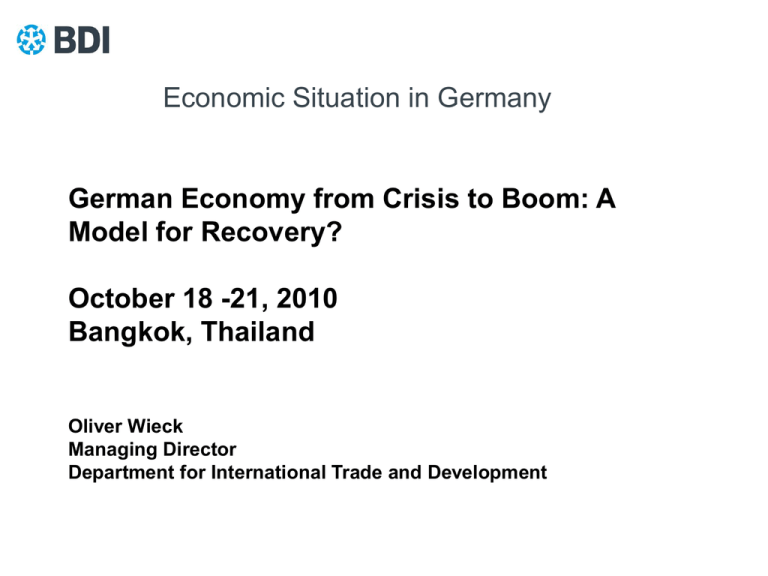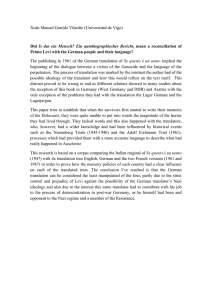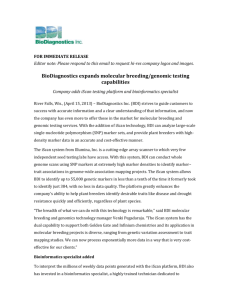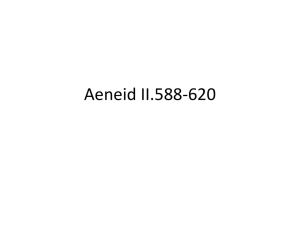A Model for Recovery? Presentation Oliver Wieck (ppt, 721 KB
advertisement

Economic Situation in Germany German Economy from Crisis to Boom: A Model for Recovery? October 18 -21, 2010 Bangkok, Thailand Oliver Wieck Managing Director Department for International Trade and Development Economic Situation in Germany Germany is experiencing a remarkable rebound in 2010. GDP will see an estimated 3.5% growth rate. World economy is still amidst an upswing, but growth dynamics have slightly lost momentum. Emerging economies are showing high growth rates. USA and Eurozone (excluding Germany) however, with somewhat muted growth rates and growth perspectives. Germany is reaping benefits from positive global economic climate. Exports have soared significantly; but domestic demand as well is kicking in at a stronger pace. Stable labor market is fueling private consumption, capital goods spending is picking up. Risks are still virulent, but have proved to be manageable. Structural problems among European countries remain major task to be addressed to avoid further frictions between member states. 2 Export of (Industrial) Goods Driving force Germany‘s Growth Germany represents just 1% of the world‘s population but accounts for 8 % of global export volume Among „green technologies“ the share is even higher (16%) German exports have doubled between 1999 and 2009 Foreign sales account for ¾ of DAX-30-Companies‘ turnover, for some German „Mittelstand“ companies the share is 90% Almost 50% of German GDP is earned abroad Export was responsible for Germany‘s high pre-crisis growth rates and has contributed to the reduction of unemployment 3 German Exports Changes in exports with selected trading partners Jan-Jun 2010 as compared to Jan-Jun 2009 90 France Jan-Jul 2010 as compared to Jan-Jul 2009 + 18.3% 85 USA United Kingdom 10.2% 14.1% 13.2% 80 China Spain 75 Czech Republic 70 55.5% 15.1% 17.2% T urkey Japan 38.8% 24.3% 65 Brazil 61.3% South Korea 60 2008 2009 2010 India 37.9% 21.1% Source: Federal Statistical Office, German Central Bank 4 Emerging Markets continue to grow Emerging Markets continue to grow Real GDP, y-o-y-change in % 2009 2010 2011 10,5 9,7 9,6 9,1 8,4 7,5 5,7 4,0 4,3 3,3 2,8 2,6 2,3 2,0 1,7 1,5 4,1 1,5 -0,2 -2,6 -4,1 -4,7 -5,2 -7,9 Eurozone Germany USA Japan Russia China India Brazil 5 Source: IMF, World Economic Outlook October 2010 Pre-crisis Level has not been reached yet Industry's remarkable recovery Production index of manufacturing industry, (2005=100), seasonally adjusted Production index of manufacturing industry, (2005=100), seasonally adjusted 130 130 Highest level - 24.3% 110 117.0 Current Status 100 90 Lowest level Status acc. to BDI Economic Report 04/09 88.6 80 Status acc. to BDI Economic Report 01/10 120 Highest level + 60.4% - 37.7% 125.6 110 Current Status 111.1 100 106.5 90 96.8 Status acc. to BDI Economic Report 04/09 80 94.6 70 60 Status acc. to BDI Economic Report 01/10 94.3 Lowest level 70 Remaining difference in production 120 Remaining difference in production + 32.1% 91.7 78.3 60 February 2008 April 2009 August 2009 November 2009 August 2010 November 2007 February 2009 August 2009 November 2009 August 2010 Source: Federal Statistical Office 6 Germany as a Model for Recovery? As an export nation Germany was one of the countries hardest hit by the crisis The crisis was used by companies to further enhance their own competitiveness Policy-makers have taken the right steps: debt reduction before the crisis, during the crisis: short-time work, scrapping premiums, economic stimulus programmes State support is now running out, consolidation is coming to the forefront Companies are now benefiting from the worldwide upswing with innovative products, „green technology“, flexibility of SMEs However: all the homework has not yet been done, additional challenges 7 Challenge: Demographic Change World Population, billion inhabitants Population Germany, million inhabitants 10 84 9 82 8 80 78 7 76 6 74 5 72 4 70 3 68 2 66 1 64 0 62 1950 1960 1970 1980 1990 2000 2010 2020 2030 2040 2050 2010 2020 2030 2040 2050 2060 Share in % 100 North America Nordamerika 5,1 4,8 Europe Europa Latin Lateinamerika America Africa Afrika Asia Asien 90 25,6 80 11,0 70 7,2 36,8 38,3 40,5 44,4 43,9 15,4 15,6 2050 2060 60 Jahre und ält er 52,2 60 46,5 45,7 50 8,6 8,4 40,2 55,4 40 20 bis unter 60 Jahre 30 14,5 21,7 20 60,4 57,3 10 19,0 17,0 16,7 16,0 Unter 20 Jahre 0 2008 Source: UN, IW 30,7 2020 2030 2040 Source: Federal Statistical Office 8 BDI – Proposal to boost Growth Strengthen Social Market Economy and principle of sustainability Enhance Europe’s competitiveness Bolster up capacity for innovation, enhance education Stabilize financial markets, safeguard business funding Stop protectionism, intensify free trade Expand infrastructure, realize sustainable mobility Unite growth, competitiveness and climate protection Realize comprehensive energy-strategy Make digital information society come true 9 Thank you!











